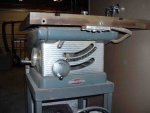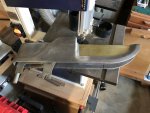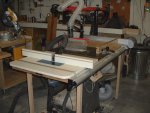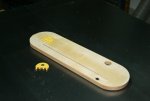Wes Morris
Member
- Messages
- 14
- Location
- Dayton, Ohio
Howdy. New member, here. Have two questions. 1: Did the 103.22161 contractor tablesaw come with a bladeguard/splitter or riving knife?
2: why does everyone hate the old Craftsman Companion tilt top tablesaw?
2: why does everyone hate the old Craftsman Companion tilt top tablesaw?






 I still have a little bitterness for the Shopsmith that comes out once in a while.
I still have a little bitterness for the Shopsmith that comes out once in a while.